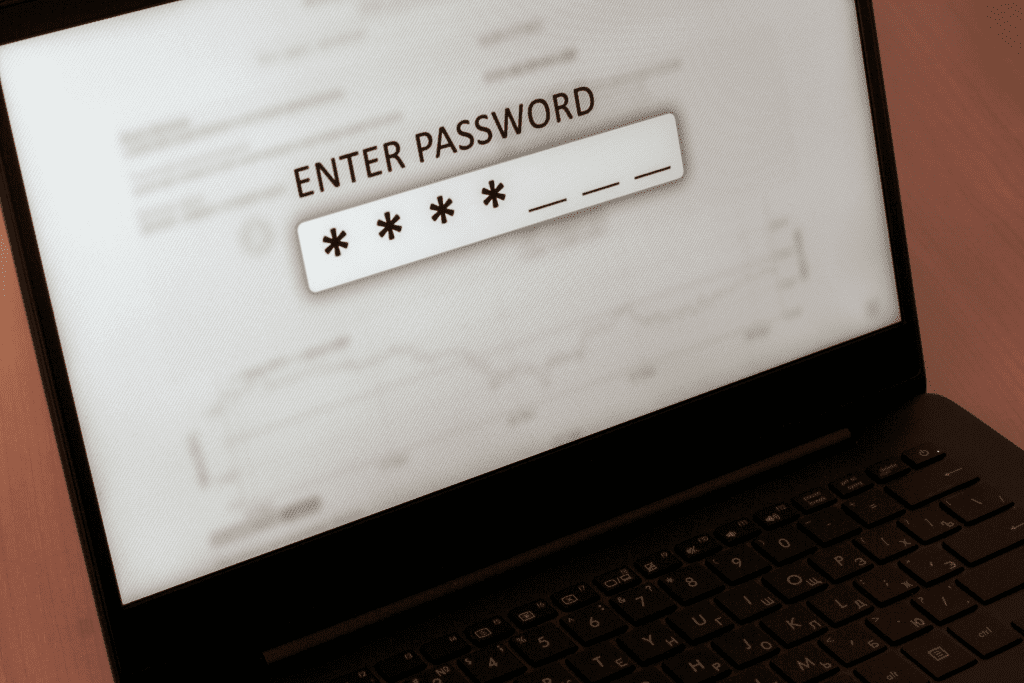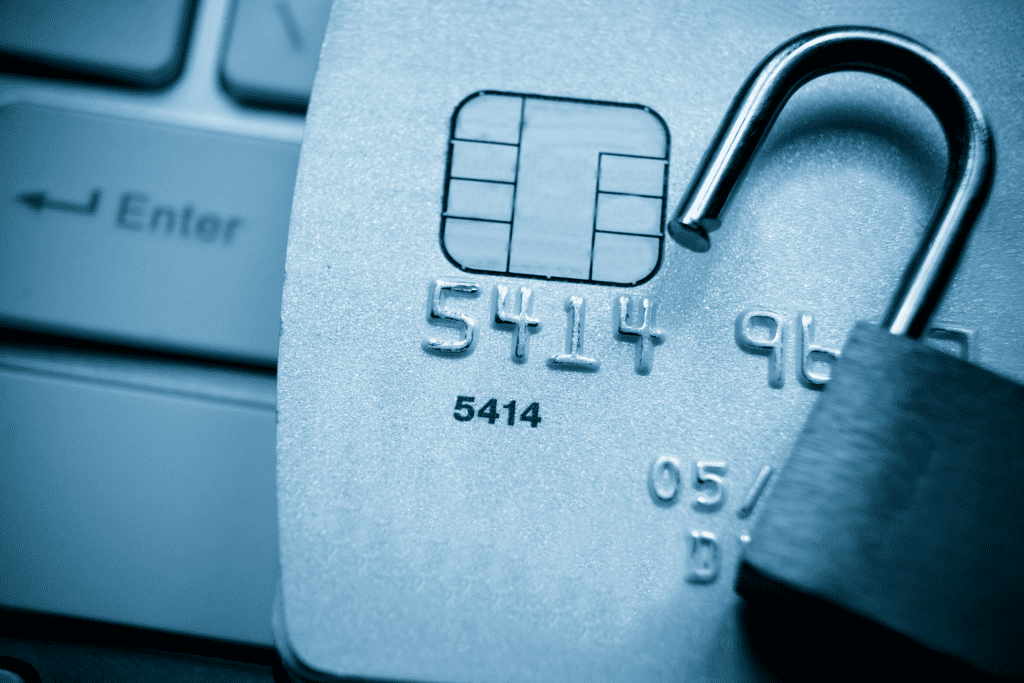
You likely share your personal information with a lot of people both in person and online. This puts your personal information at risk. No one is safe from hacking, even when you share your personal information at the doctor’s office or to buy a car.
This may make you think that identity protection is necessary and worth it. We’ll review what it is, how it works and whether or not it truy is worth it below.
What is Identity Theft Protection?

The name identity theft protection is a little misleading. It’s not really protection since it alerts you AFTER the theft has already occurred. While it’s nice to know about the issue right away rather than after too much damage is done, there’s no way to fully prevent your information from getting stolen.
Identity theft protection services usually includes four services:
- Credit monitoring
- Identity monitoring
- Identity recovery
- Identity theft insurance
Every program is different but these are the average features offered.
How Does it Work?

Think of identity theft protection as more of a monitoring after the fact service. It alerts you fairly quickly of any fraudulent activity, but you still have to deal with the theft happening.
Identity theft protection monitors your credit reports mostly. They tell you when someone does something with your credit, such as opens a new account, applies for new loans, or racks up debt on your credit cards.
The quicker you react to the information, the faster you can stop the hacker from doing any more damage to your credit score.
Identity theft protection may also alert you of anyone trying to use your identity. This goes beyond opening new credit, which would show up on your credit report. It includes things like trying to open a new bank account in your name or getting access to your current bank accounts.
Most identity theft protection plans also help you recover the damages of identity theft if it happens, providing insurance of up to $1 million. But again this is AFTER the fact. The damage is done and you are now trying to pick up the pieces.
What’s the Cost?
There are hundreds of identity theft protection programs available today. Most have a monthly cost, like a subscription. The average cost is $25 – $35 a month, but there are plans that cost much less or much more depending on what services you want.
Some of the services they may include besides what’s mentioned above include:
- Social media identity monitoring
- Junk mail opt-out
- Browsing tools for safer browsing
- Family plans for more savings
- Credit score tracking
What to Look for in Identity Theft Protection

If you’re considering identity theft protection, it’s important to know what to look for and what to avoid.
Identity Theft Protection Should:
- Have an informative website that clearly states what they offer and how it works
- Clearly state which credit bureaus they monitor (not all services monitor all three bureaus)
- Clearly state what else they monitor outside of credit bureaus
- State what services they provide if your identity is stolen
- State what, if any, insurance coverage they provide for financial losses due to identity theft
- Provide a clear privacy policy
- Have a customer service line you can call to talk to a person rather than just reading online
Identity Theft Protection Shouldn’t:
- Have hidden fees or costs
- Promise they can prevent identity theft
- Scare you into thinking identity theft protection is the only way to protect yourself
- Not have a website
- Hide what information they provide you with during monitoring
- Not disclose what their insurance covers if your identity is stolen
Who Should Consider Identity Theft Protection?

Honestly, no one really needs identity theft protection, but if any of the following apply, you may want to consider it.
You Were Already a Victim of Identity Theft
If you’ve already suffered the consequences of identity theft, you may want the automated service to continue checking your accounts and records in case something was missed or they are at it again.
You Don’t Want to DIY the Services
You can DIY identity theft services (more on this below), but if you know you won’t follow through on what needs to be done, paying for the service may be better for you.
You Need the Extra Peace of Mind
As long as you understand that identity theft protection won’t prevent theft, but will alert you right away and that gives you peace of mind, paying for it might be worth it.
How to DIY Identity Theft Protection

Like I said earlier, you can DIY identity theft protection and get the same results. It requires a little legwork on your part, but if it saves you as much as $500 a year or more, it may be worth it.
Here are ways to do your own identity theft protection.
Freeze your Credit
Anyone can freeze their credit. This stops anyone from opening an account in your name including you. So yes, it can be a bit of a pain because you have to unfreeze your credit when you want to apply for credit, but you shouldn’t apply for credit often, so it’s worth it.
You must contact TransUnion, Equifax, and Experian separately to freeze each credit bureau and again when you need to unfreeze them, but it takes only a few seconds once you have it set up.
Set up Fraud Alerts
All three credit bureaus offer free fraud alerts. If you were a victim of identity theft already, you can set up a 7-year fraud alert. If you weren’t, you can set up a 1-year fraud alert. You just contact one bureau to activate the alerts and it will notify the other two who will also activate it.
Dispute any Fraudulent Information
If you get an alert of fraudulent activity on your account, you should immediately dispute it with the credit bureau. Check all three credit reports, which you can do here for free and then dispute the item with the appropriate bureau.
Dispute it in writing and include as much proof of why you think the information is in error. The credit bureau has 30 days to look into the issue and respond. You can also file a police report to help the issue if you think your identity was stolen.
FAQs – Identity Theft Protection and How it Works
What are the benefits of identity theft protection?
Identity theft protection isn’t free, but it does offer several benefits that make it worth it to some consumers. The largest benefit is peace of mind knowing that you have account monitoring 24/7. Other benefits include monitoring on places like the dark web, unusual account openings, or even inappropriate use of your identity on social media profiles. Knowing someone is using your identity before it gets out of hand gives you the chance to get one step ahead of them and stop the destruction.
What is the best way to stop identity theft?
There’s no foolproof way to stop identity theft, but the number one way is to freeze your credit. Frozen credit means no one can do anything new with your credit. They cannot open an account or make changes to current accounts that would require the creditor to check your credit. It doesn’t stop someone from stealing your identity in other ways, such as opening bank accounts in your name and/or draining your bank account, but it makes it harder to get a hold of your information.
Do other insurance programs cover identity theft?
Identity theft protection programs highlight the insurance coverage they offer if your identity is stolen (kind of ironic since they promise to protect your identity), but your homeowner’s insurance policy may offer the same protection.
Some homeowner’s insurance policies include identity theft coverage in their basic coverage and others require it as an additional rider. Even if you must pay for a rider, it’s usually much less than a monthly subscription to an identity theft program.
Final Thoughts – Is Identity Theft Protection Worth It?
Identity theft protection is only worth it for a few select people. Honestly, you can do everything they offer yourself, but it requires consistency.
Freezing your credit is the best way to protect yourself and may even provide better protection than identity theft protection programs offer since it stops new activity on your credit. But, monitoring is important too. Since you likely can’t monitor the dark web or watch social media like a hawk to see if you were hacked, the best method of protection is to keep your personal information secure.
Don’t share passwords with anyone and if you must share personal identifying information with someone, make sure it’s legit and you aren’t getting taken by a scam.
These simple steps can save you hundreds of dollars a year and protect your identity better than most protection plans can.
